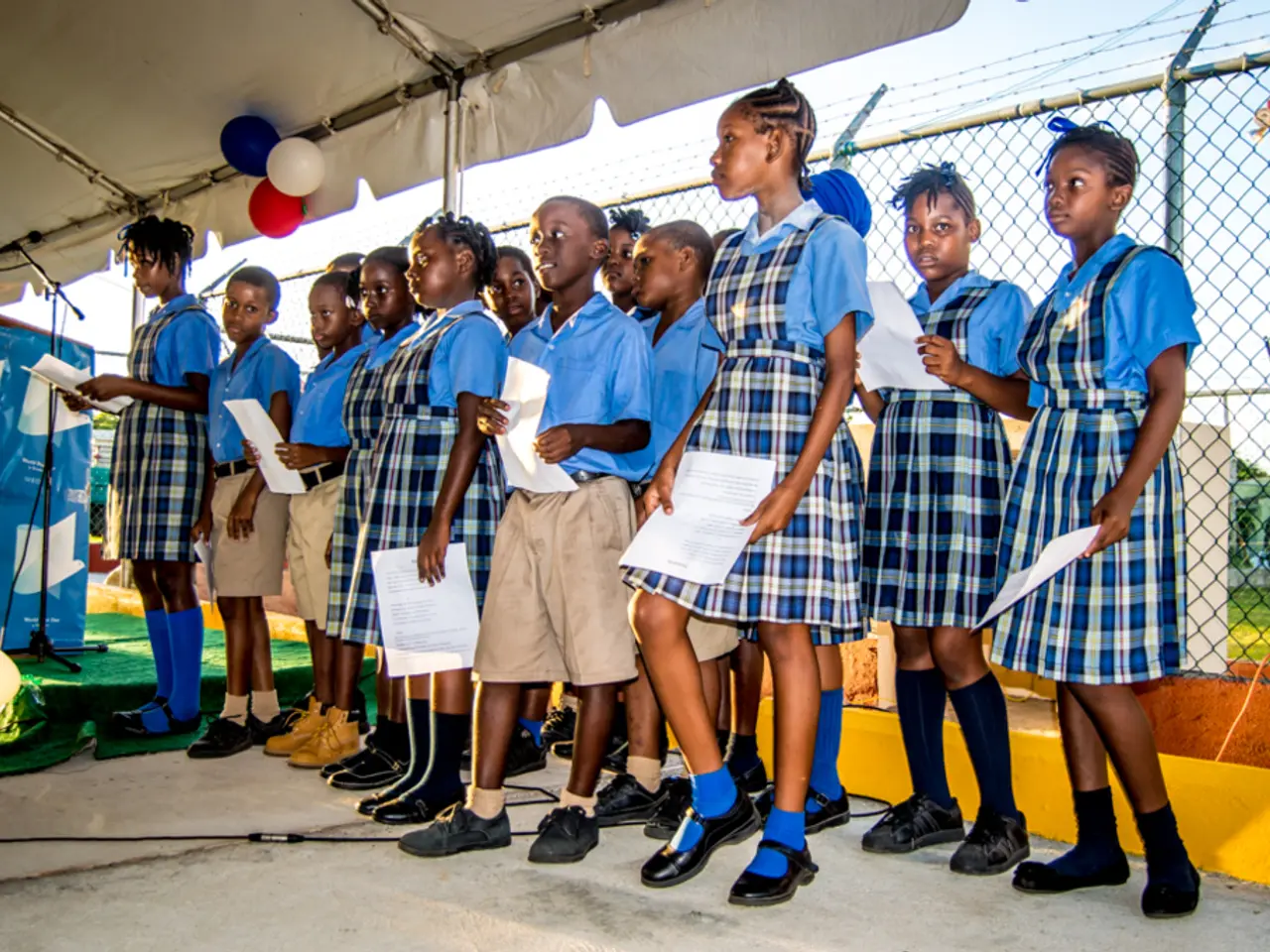Overheating classrooms posing a significant issue in education: Insights on the escalating concern of school temperatures
In recent years, research has highlighted the impact of classroom temperatures on learning outcomes. A study from 2018 revealed that each 1°F increase in school-year temperature reduces the amount learned that year by 1%. This finding suggests that hot classrooms may negatively affect a student's ability to learn.
However, many countries and regions, including Nepal, lack specific national guidelines for indoor temperature maximums in schools. This lack of regulation leaves schools vulnerable to the effects of climate change, as temperatures continue to rise.
A survey in Nepal found that extreme heat results in increased absenteeism, headaches, fatigue, and compromised learning outcomes, with minimal preparedness or response measures in place. Similarly, data shows that in the United States, the difference between the coolest and hottest classrooms within a single school building can be more than 14°C on a hot day.
Climate change is causing dangerously high temperatures in classrooms worldwide. In the UK, researchers are gathering information to prepare for a future where schoolchildren might miss education due to extreme heat. Schools in the UK are expected to become increasingly problematic for managing extreme heat as climate change progresses.
Low- and middle-income countries are disproportionately affected, especially in urban areas where the urban heat island effect increases temperatures. In Nepal, heatwaves are becoming more frequent and intense, and there are few guidelines for dealing with hot classrooms.
Without cheap renewable electricity supplies, air conditioning carries a high financial and environmental cost. A study suggests that rolling out more air-conditioning units could increase annual electricity demand by 2% in Europe and 15% in India.
However, some countries are taking steps to address the issue. In the Maldives, all of the country's 3,704 classrooms are expected to have air-conditioning units installed by the end of 2025 as part of the Cool School Project.
In the US, a report estimates that 41% of public school districts need to replace or update heating, ventilation, and air conditioning (HVAC) systems in at least half their schools. The average US public school was built nearly half a century ago and was not designed to function in present-day climate conditions.
As temperatures continue to rise and health risks increase, air conditioning is becoming more common in schools around the world. However, the issue of who will bear the financial and environmental costs remains a concern.
Unicef reported that hundreds of millions of schoolchildren globally missed out on education in 2024 due to heatwave-forced school closures. Data collection and sensors in classrooms can allow for real-time remediation, such as moving to a cooler part of the building or turning on a window air-conditioning unit in a particular room.
As the world grapples with the effects of climate change, ensuring that schools remain safe and conducive learning environments will be crucial for the future of education.
Read also:
- Understanding Hemorrhagic Gastroenteritis: Key Facts
- Stopping Osteoporosis Treatment: Timeline Considerations
- Tobacco industry's suggested changes on a legislative modification are disregarded by health journalists
- Expanded Community Health Involvement by CK Birla Hospitals, Jaipur, Maintained Through Consistent Outreach Programs Across Rajasthan








